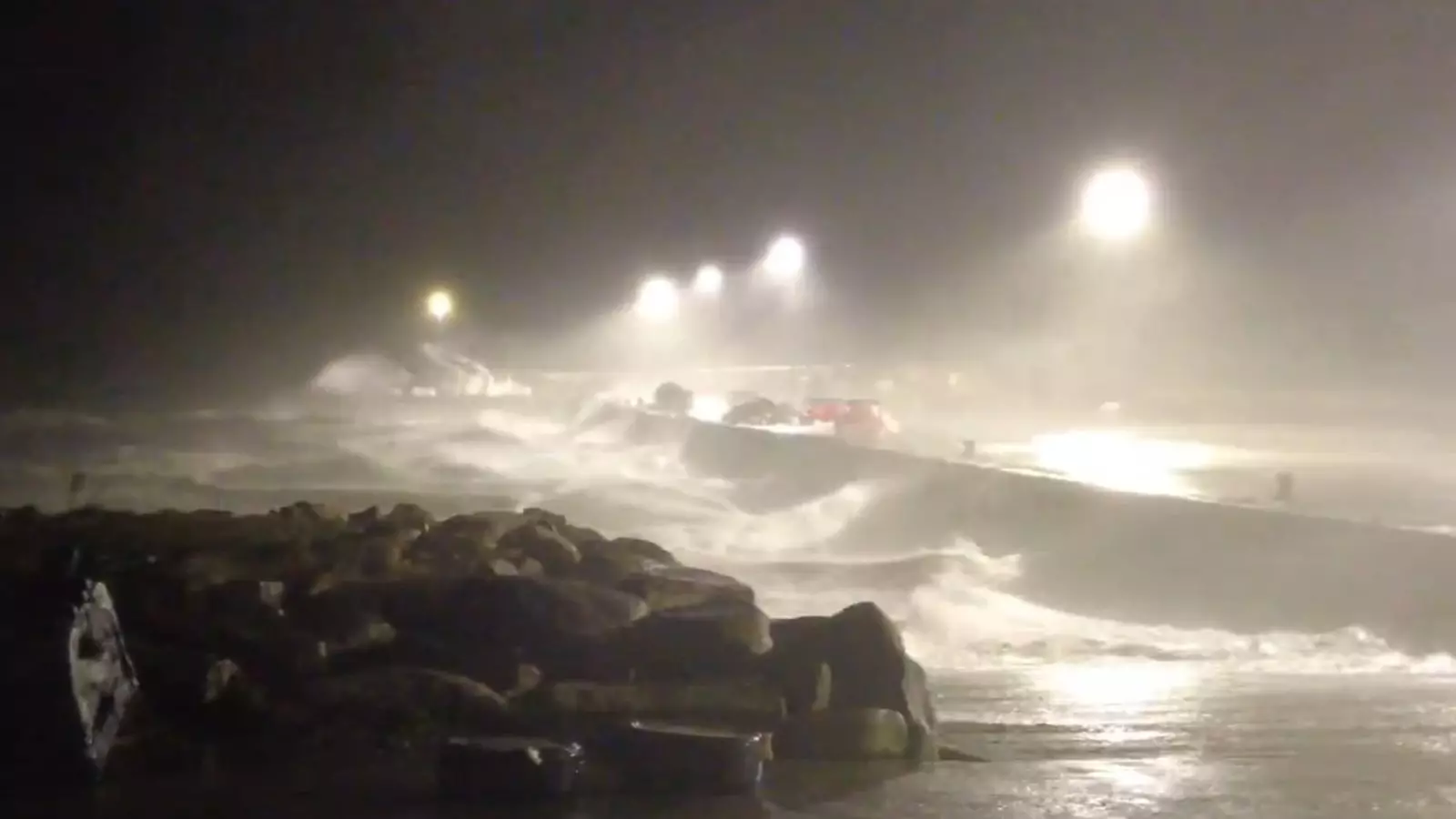As Storm Darragh sweeps across the UK and Ireland, millions find themselves uncomfortably reminded of nature’s raw power. With a rare red “danger to life” warning in place, especially for regions in Wales and parts of the South West, citizens face an unprecedented challenge as the fourth named storm of the season arrives. This alarming scenario, characterized by warnings cascading across the map, raises critical questions about safety, preparedness, and infrastructure resilience.
Assuring residents of their safety, governmental bodies have not shied away from proactive measures. A text alert warning approximately three million individuals about the impending storm’s impact was sent out before Storm Darragh made its initial landfall in Ireland. The message served as both a precaution and a clarification of the potential disruptions. It urged people to remain indoors, as treacherous conditions make driving hazardous and could lead to unwanted accidents or worse—loss of life. Such actions reflect a necessary shift in priorities, particularly in light of the earlier storms that had already inflicted damage and sorrow upon communities.
Starting at 3 a.m. and spanning until 11 a.m., the Met Office’s red warning indicates an alarming level of risk, forecasting wind gusts of up to 90 mph. The coastal areas, particularly the regions of West and South Wales, are expected to face the brunt of this onslaught. High winds are not just a nuisance; they carry immense risks including uprooted trees, flying debris, and swollen ocean waves crashing onto unsuspecting shorelines. For several areas in the South West and Wales, the red alert encompasses locations like Bristol, Cardiff, and Devon—places now grappling with the anticipation of significant disruptions.
The necessity of community preparedness cannot be overstated in such scenarios. Echoing this sentiment, the Cabinet Office issued a strong recommendation for inhabitants to stockpile essential items such as torches, batteries, and mobile power packs. These considerations serve as practical steps for weathering the storm and exemplify a communal spirit in the face of adversity. Such foresight is essential, as pockets of the UK are still in recovery mode from previous natural disasters.
While the text alerts aimed to mitigate fear through timely information dissemination, not everyone received the crucial warnings. This inconsistency raises significant concerns about the efficacy of emergency communication systems. It underscores the potential vulnerabilities within the network tasked with safeguarding public safety during crises. A responsive system is imperative in ensuring that critical updates reach all affected individuals, highlighting an area ripe for improvement.
As Storm Darragh continues to unfold, it presents not just a meteorological event but a broader challenge to societal resilience. The storms compel collective action—how communities prepare, respond, and recover defines the narrative. The government’s alerts, despite their mixed success, are a step in the right direction. Future storms will inevitably hit, but through learning, adaptation, and vigilance, communities can enhance their readiness, safeguarding both lives and livelihoods against nature’s relentless unpredictability.

